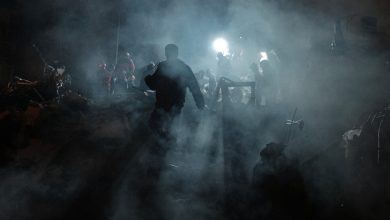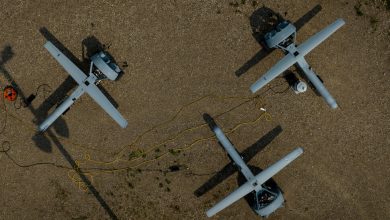Hikers Rescued After Following Nonexistent Trail on Google Maps

A search-and-rescue group in British Columbia advised hikers to use a paper map and compass instead of street map programs after it said two hikers had been rescued by helicopter after likely following a trail that did not exist but that appeared on Google Maps.
The group, North Shore Rescue, said on Facebook that on Nov. 6 Google Maps had removed the nonexistent trail, which was in a very steep area with cliffs north of Mount Fromme, which overlooks Vancouver.
The group said it had deployed a helicopter and a rope rescue team on Nov. 4 to the backside of the mountain, which is 3,888 feet high and covered in temperate rainforests, to help a stranded hiker who did not have a light and could not be seen below the dense tree canopy.
“The team was able to locate the subject, get him in a harness, and bring him safely down to a location where he and the team could be extracted by helicopter — just before the clouds closed in and would have otherwise prevented helicopter access,” the group said.
The group said it had recently put up signs that warned “Wrong Way Dangerous Cliffs” to underline how dangerous the area was.
In September, the group rescued a hiker who called and said he was on a cliff and was unsure how long he could hang on. Two years earlier, a hiker had fallen to his death from the same spot, the group said.
North Shore Rescue said the hikers in the September and November rescues “may have sought to follow a trail on Google Maps that does not exist.”
The group said “it is simply not appropriate” to use apps such as Google Maps for the wilderness, though apps specifically designed for trails, such as CalTopo and Gaia GPS, were acceptable.
People can submit suggested edits to Google Maps for wrong or missing data. Google does not provide a timeline for how long it takes to process those suggestions. It was unclear how the nonexistent trail had appeared on Google Maps in the first place.
“We use a variety of sources to update Google Maps, including third party information, imagery and feedback from our community,” the company said in an emailed statement on Sunday.
This is not the first time hikers have been led astray by misleading or phantom trails on Google Maps.
In July 2021, mountaineers warned that Google Maps might direct visitors to “potentially fatal” trails on Ben Nevis, Britain’s highest peak.
The warning was issued by Mountaineering Scotland, a climbing organization, and the John Muir Trust, a charity that maintains natural areas in Britain.
After the warning, the two groups said that Google Maps had updated directions for Ben Nevis and that they had discussed other wilderness safety issues with Google Maps representatives.
Maggie Peikon, a spokeswoman for the American Hiking Society, said people should always research a trail so that they know what to expect about the terrain, elevation gain and distance.
This can be done by looking up information on apps and websites specifically designed for hikers, and on social media sites.
Ms. Peikon said the society also recommended that hikers of all experience levels pack 10 essential items, including water, a first-aid kit and appropriate footwear.
“If you do get off trail, or you happen to get lost, at least you have the things you need to stay safe and be comfortable until you either get help or get off the trail,” she said.
Sandy Colhoun, the president of the National Outdoor Leadership School, a nonprofit global wilderness school, said the school’s courses relied entirely on map and compass skills, even though digital technology could be “amazing when it works.”
“In the wilderness, situations change dramatically and quickly and having the confidence to be able to know that you can sort your way out of it starts with having that skill set,” Mr. Colhoun said.
This is especially important because technology can fail, he said. A device’s battery might die, and satellite signals could be interrupted by natural obstacles, such as dense forests, deep canyons and bad weather.
“When you’re in the wilderness, in austere environments, you don’t really have a second chance if your technology fails and you don’t have a backup system,” Mr. Colhoun said.





